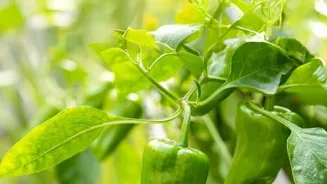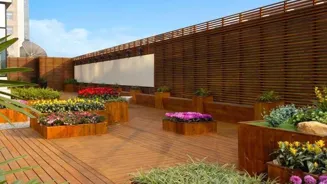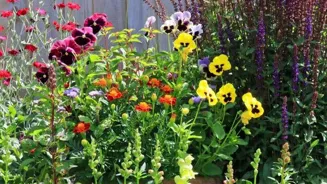Discover the secrets to building a thriving community garden! Learn the 10 essential steps for success in your neighborhood
Essential Steps for Building a Successful Community Garden in Your Neighborhood!
Transform barren plots into vibrant community gardens
Mumbai, October 26 – Imagine stepping out of your apartment and into a lush green space, bursting with the colors of fresh vegetables, herbs, and flowers. A community garden can be just that – a vibrant hub where neighbors connect, learn, and grow together.
But transforming a barren plot into a thriving garden requires careful planning and a dash of community spirit. Fear not, aspiring gardeners! Here are 10 essential steps to help you cultivate a successful community garden in your neighborhood:
Step 1
Gauging Interest and Building a Core Group: Before you even think about planting a seed, it’s essential to assess the enthusiasm within your community. Put up notices in your building, local stores, or community centers. Organize a meeting to discuss the idea and gauge interest.
This initial gathering will help you form a core group of dedicated individuals who will be the driving force behind the project. Remember, a strong foundation of enthusiastic volunteers is crucial for the garden’s long-term success.
Discuss potential benefits like fresh produce, community bonding, and environmental awareness. Getting people excited about the possibilities will make the initial steps much easier. This is the bedrock upon which your garden will flourish.
Step 2
Finding the Perfect Plot: Location is key! Look for a sunny spot with access to water. Ideally, the land should be relatively flat and free from major obstructions. Check with your local municipality or landowning bodies to understand the rules and regulations regarding community gardens.
You might need permission or a lease agreement. Consider factors like soil quality and accessibility for all community members, including those with mobility issues. A previously unused piece of land, a neglected park corner, or even a rooftop can be potential candidates.
Don’t be afraid to think outside the box! A well-chosen location will set the stage for a bountiful harvest. Remember to test the soil for any contaminants to ensure it's safe for growing food.
Step 3
Planning and Design: Once you have secured a location, it’s time to design your garden. Consider the needs and preferences of your community members. Do you want individual plots, communal growing areas, or a combination of both? Plan for pathways, seating areas, composting bins, and tool storage.
Draw a sketch of your garden layout, taking into account sunlight patterns and water access. Think about incorporating elements like raised beds for easy access, vertical gardening for space optimization, and pollinator-friendly plants to attract bees and butterflies.
This is your chance to create a garden that reflects the unique character of your community. Involve everyone in the design process to foster a sense of ownership and shared responsibility.
Step 4
Soil Preparation and Enrichment: Healthy soil is the foundation of a healthy garden. Before planting, it’s crucial to prepare the soil by removing weeds, rocks, and debris. Test the soil pH and nutrient levels to determine what amendments are needed.
Consider adding compost, manure, or other organic matter to improve soil fertility and drainage. Avoid using synthetic fertilizers and pesticides, which can harm the environment and human health. Embrace sustainable gardening practices like composting, mulching, and crop rotation.
These techniques will help improve soil health naturally and create a thriving ecosystem. Remember, healthy soil equals healthy plants and a bountiful harvest. This stage is critical for the long-term success of your garden.
Step 5
Securing Funding and Resources: Building a community garden requires resources: tools, seeds, soil amendments, and more. Explore potential funding sources, such as local grants, community organizations, and fundraising events. Reach out to local businesses for sponsorships or donations of materials.
Consider organizing a seed swap or tool drive to collect resources from community members. Create a budget and track your expenses carefully. Transparency and accountability are essential for building trust and ensuring the long-term sustainability of the garden.
Don't underestimate the power of community contributions. Even small donations can make a big difference. A well-managed budget will ensure that your garden has the resources it needs to thrive.
Step 6
Planting and Growing: (Avoid specific crop recommendations)This is where the magic happens! Start planting your seeds and seedlings according to the season and climate in your area. Involve community members in the planting process through workshops, demonstrations, and volunteer days.
Encourage everyone to participate and share their knowledge. Provide guidance on proper planting techniques, watering schedules, and pest control methods. Remember to choose plants that are well-suited to your local conditions and resistant to common pests and diseases.
Label your plants clearly and create signage with helpful information. Celebrate the joy of growing together and watch your garden flourish.
Step 7
Maintaining and Sustaining the Garden: A community garden requires ongoing maintenance to keep it healthy and productive. Establish a regular schedule for weeding, watering, fertilizing, and pest control. Organize workdays to tackle larger tasks, such as pruning, composting, and mulching.
Encourage all garden members to contribute to the maintenance efforts. Implement sustainable practices like water conservation and integrated pest management. Regularly assess the garden’s needs and make adjustments as necessary.
A well-maintained garden will provide a beautiful and productive space for the entire community. This requires consistent effort and collaboration from all members.
Step 8
Fostering Community Engagement: A community garden is more than just a place to grow food; it’s a place to connect with your neighbors and build relationships. Organize social events, such as potlucks, workshops, and harvest festivals.
Create opportunities for people to learn from each other and share their gardening experiences. Encourage interaction and collaboration among garden members. Make the garden a welcoming and inclusive space for everyone, regardless of their age, background, or gardening experience.
A strong sense of community will ensure the garden’s long-term success and create a vibrant hub for social interaction.
Step 9
Harvesting and Sharing the Bounty: One of the greatest rewards of community gardening is the opportunity to harvest fresh, healthy produce. Establish clear guidelines for harvesting and sharing the bounty.
Consider creating a system where everyone can take what they need and contribute to a shared harvest for those who are less fortunate. Organize regular harvest days and celebrate the abundance of your garden. Encourage members to share their recipes and cooking tips.
A community garden can provide access to nutritious food for everyone and promote healthy eating habits. Sharing the harvest strengthens community bonds and reinforces the spirit of collaboration.
Step 10
Continuous Learning and Improvement: Community gardening is a journey, not a destination. Continuously learn and adapt to new challenges and opportunities. Seek feedback from garden members and make adjustments as needed.
Attend workshops, read books, and consult with experienced gardeners to improve your skills and knowledge. Experiment with new techniques and varieties of plants. Share your successes and failures with others.
A community garden is a living laboratory where you can learn, grow, and connect with nature and your neighbors. Embrace the spirit of continuous learning and improvement, and your garden will thrive for years to come.
Remember to celebrate your achievements and acknowledge the contributions of everyone involved.
Creating a thriving community garden in 10 steps
By following these 10 essential steps, you can create a successful community garden that will bring joy, nourishment, and connection to your neighborhood. So, gather your neighbors, roll up your sleeves, and get ready to grow!











